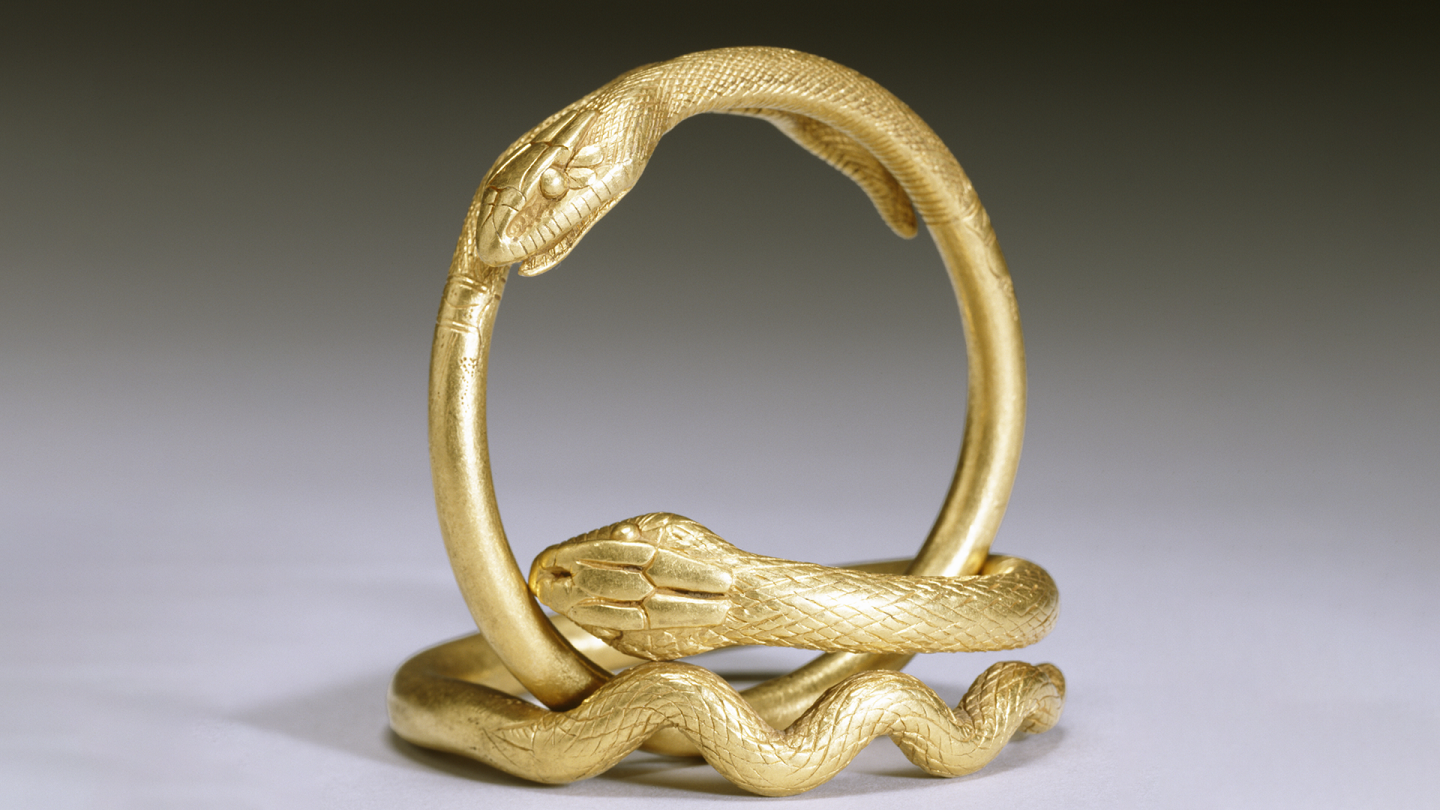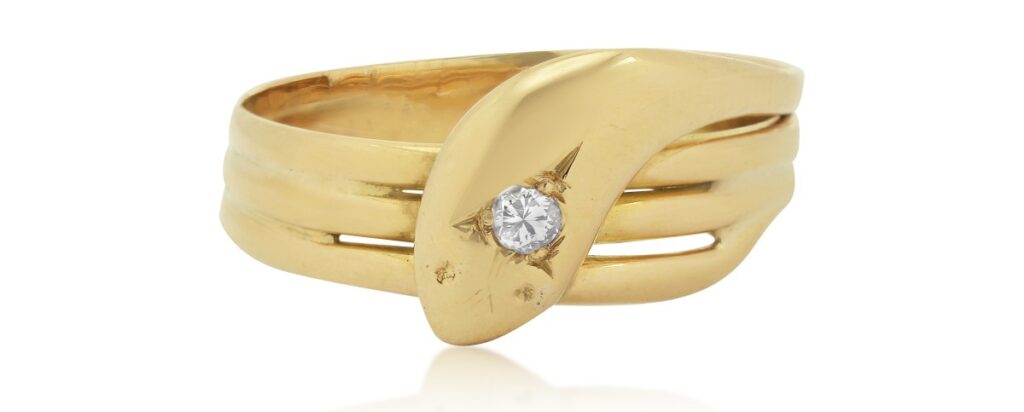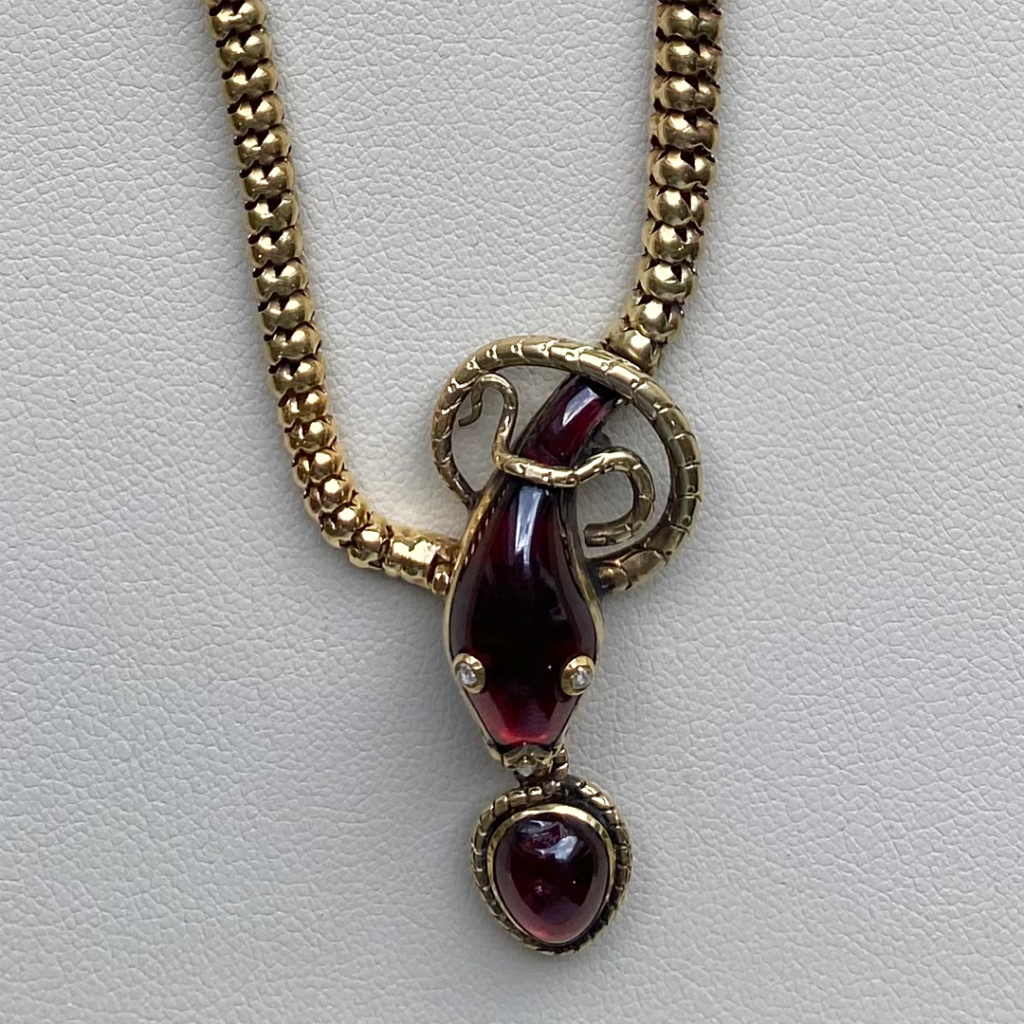The best snakes are always jeweled, their sinewy forms wrapped sensually around a finger, wrist or neck. From the artisans of ancient Egypt to the workshops of Bulgari, snakes are a lasting motif in jewelry. Snakes can be either friendly or fierce depending upon the type of snake and the historical period in which it was created. Throughout time people have both revered and feared serpents with their forked tongue, slithering movements and scaly skin, all traits that make snakes the perfect model for jewelry.
Snake Jewelry in the Ancient World
The earliest snake jewelry can be traced back to the Egyptians and Mesopotamians. Snake jewelry was discovered in the tomb of Queen Puabi, who reigned in Mesopotamia in the early second millennium BCE. Her crown that had two snakes entwined on a staff, was also in the tomb. She wasn’t the only ancient royal who wore snakes. Queen of the Nile, Cleopatra was known to wear a snake bracelet. In the 1963 movie “Cleopatra”, actor Elizabeth Taylor, who played the title role, wore her personal Bulgari Serpenti bracelet as part of her costume.
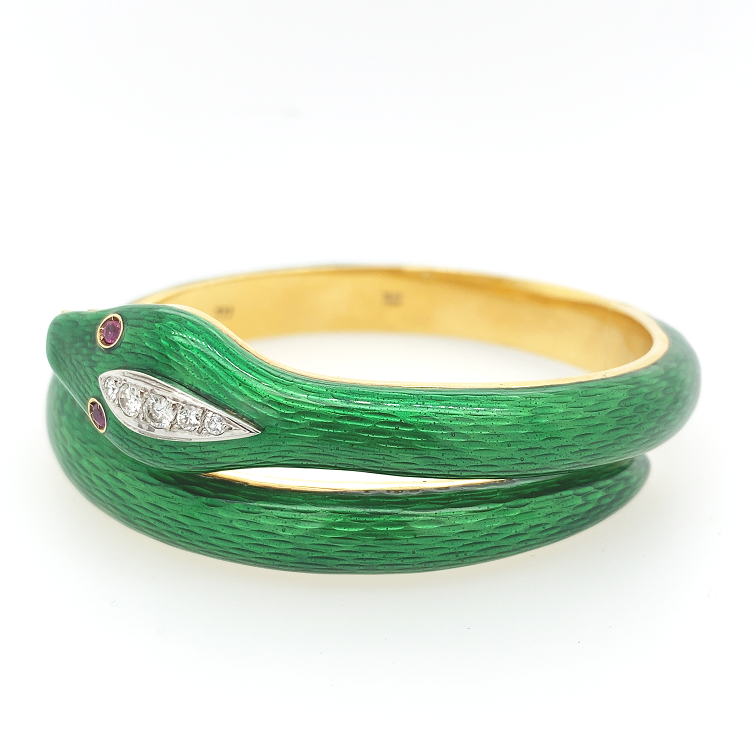
The Egyptians thought snakes were supernatural beings and Pharaohs also perceived snakes as a spiritual connection to wisdom and gods with serpents being a symbol of royalty. Pharaohs wore headgear with the body of a cobra wrapping around their head, while the face of the snake stood above their heads. They also wore pendants and bracelets with serpents. In addition to wisdom, snakes were thought to be protective, something royals were always in need of, and people in the ancient world thought that by wearing snake jewelry it brought them into closer contact with the gods allowing them easy access to communicating with deities.
During the Greek and Roman eras, snakes were thought to ward off evil. Romans gifted snake jewelry to loved ones as a symbol of love and protection. Snake bracelets were often worn in pairs and a snake bracelet worn climbing up the wrist was considered a sign of immortality.
Royalty and Snake Jewelry
Attitudes towards snakes changed during the middle ages and they were considered evil, yet protective. Queen Elizabeth I, who ruled England from 1558-1603 allegedly wore a gold and pearl snake ring and bracelets with a serpent motif were popular during that time. Years later, King George III, Britain’s ruler from 1760 – 1820 was said to have worn a snake bracelet. Meanwhile over in France Marie Antoinette was wearing snake earrings. Perhaps in addition to its protective powers, snakes represented fertility and life force, two qualities that were important to royals.
Snake jewelry reached the pinnacle of popularity during Queen Victoria’s reign from 1837 – 1901. It started when Victoria’s husband-to-be, Prince Albert, gave her a gold snake ring embellished with an emerald, which was her birthstone. At the time, snakes were symbolic of eternal love and commitment. During the 1800s photography and printing were becoming more developed and more widely used. This new technology meant that Victoria was photographed and reported on more than previous monarchs, including her clothes. As queen, she was a trendsetter and wearing the snake engagement ring brought instant cool to serpent jewels and fashionable Victorians were soon wearing their own snake pieces. Queen Victoria loved her engagement ring so much that reportedly she was buried wearing it.
Contemporary Snake Jewelry
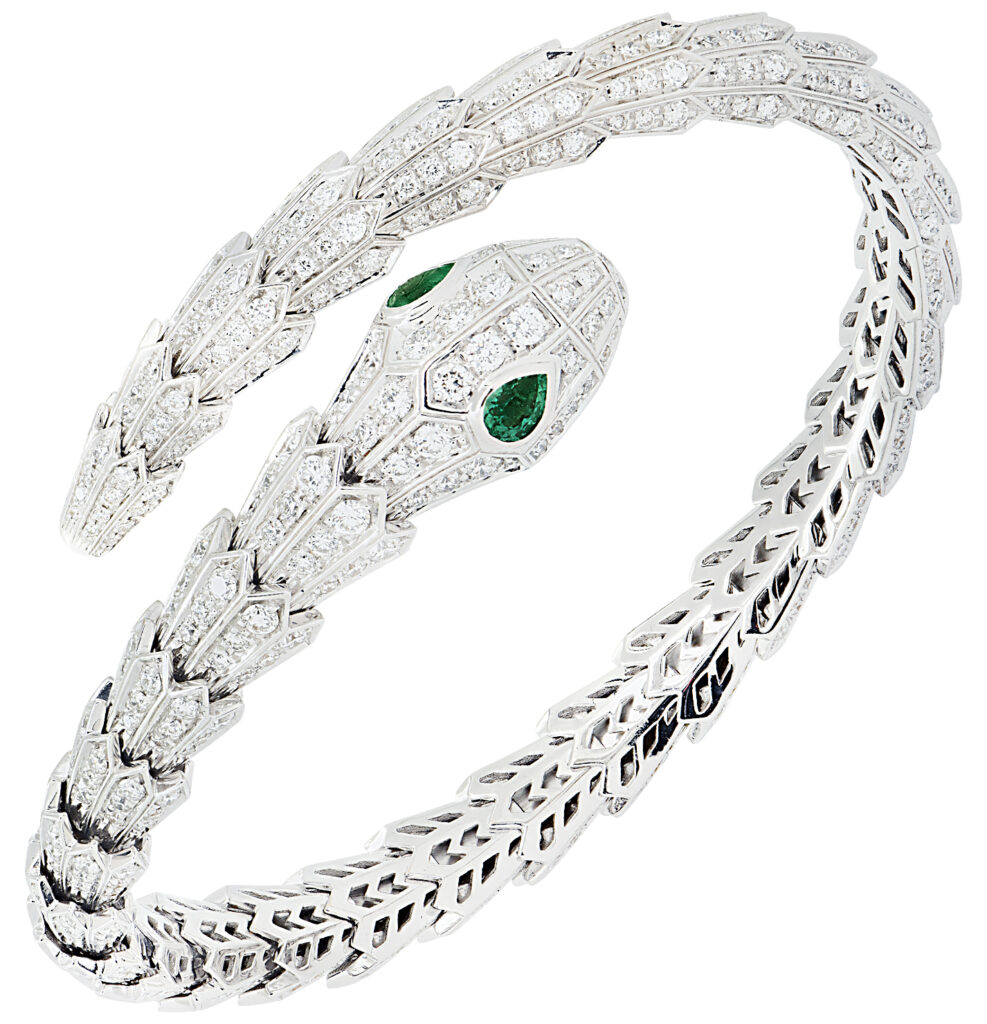
Snake jewelry got another big boost in 1948 when Bulgari introduced the first piece in its Serpenti collection: a gold bracelet watch. Crafted in the tubogas style, the body coiled around the wrist and the square head hid a watch. During the 1950s the style evolved to be more realistic. The head became less square and precious gemstones were used to create scales. Enamel was also used to add more color. Bulgari continues to introduce new editions to its Serpenti collection that has become one of its most renowned and beloved motifs.
Representative of transformation, snakes have been endowed with the mystical powers of protection, eternal love and fertility throughout history, while today their sensual form continues to seduce us.
Top of Page: Pair of gold snake bracelets, 1st century AD, Roman Empire, Walters Art Museum, public domain, Wiki Commons.
Authored by Amber Michelle
